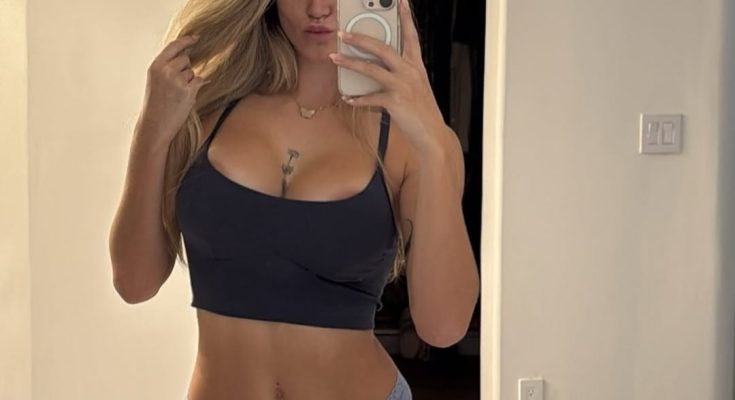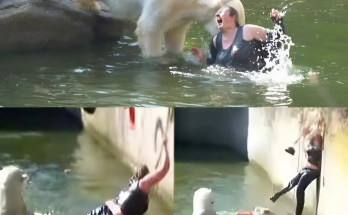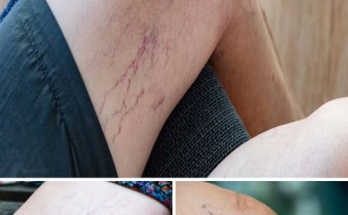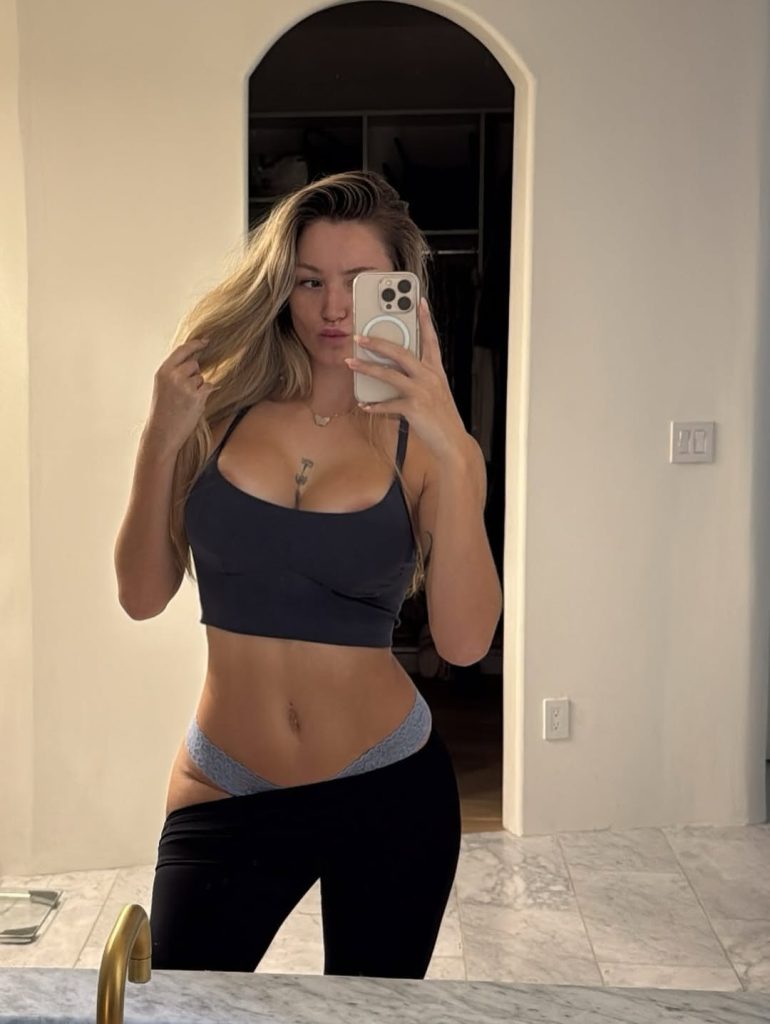
- The subject, with long, flowing blonde hair, is in the act of self-documentation—a moment both private and deliberately shared. They lift a smartphone with a white case, capturing themselves with intentionality.
- Their other hand brushes near the hairline, a gesture that feels casual yet carefully composed, suggesting a delicate interplay of agency and self-awareness.
- They wear a dark gray crop top, minimalist and sharp in its cut, revealing the midriff in a way that draws attention to the subtleties of posture and physical form.
- Below, black pants are partially pulled down to reveal powder blue underwear—a stylistic choice that disrupts symmetry and introduces a visual pause, inviting contemplation of contrast, texture, and exposure.
This self-portrait doesn’t demand attention through extravagance; rather, it whispers confidence through intentional composition and unguarded physicality.
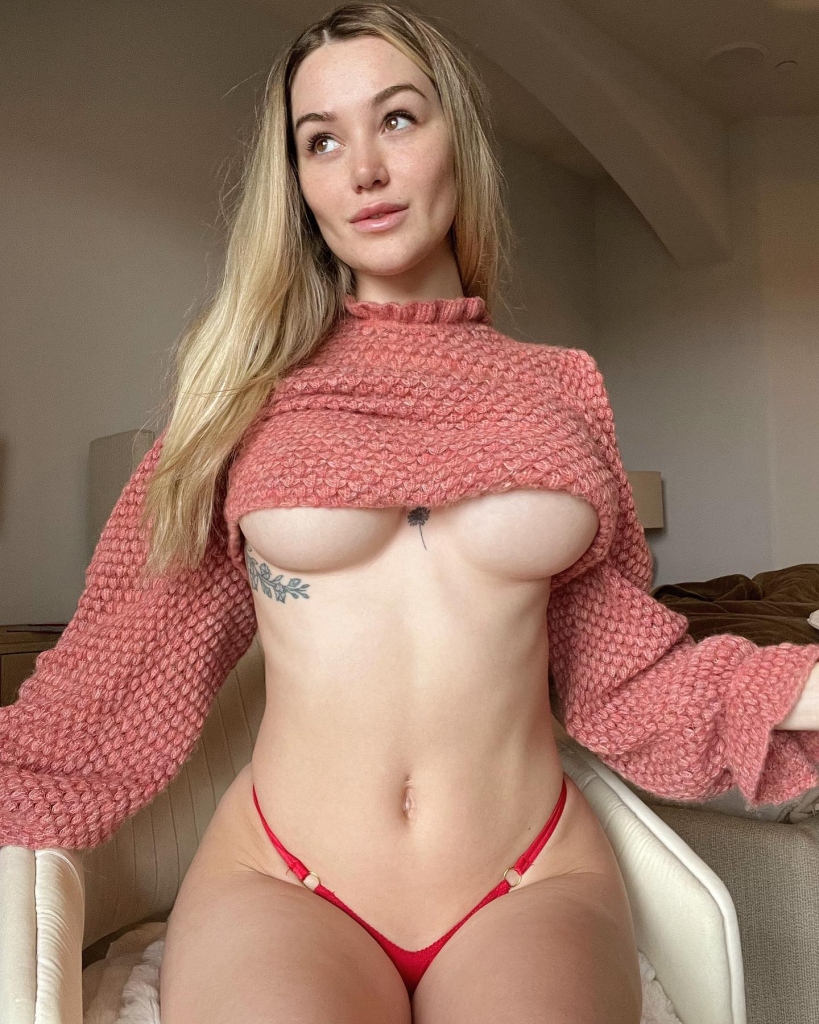
🌟 Visual Themes: Duality, Transparency, and Assertion
- The visible tattoo on the chest becomes a central symbolic accent—body as canvas, memory as ink. It speaks of permanence and meaning, of stories embedded directly into skin.
- There’s a striking duality: the poised, composed upper half versus the undressed, casual lower half. This juxtaposition creates tension between discipline and spontaneity, intention and release.
- The mirror itself is a portal, reflecting not just a person, but a layered identity: curated yet raw, sensual yet subdued.
This interplay evokes deeper themes of transformation and self-reflection—how we construct and deconstruct ourselves through visible symbols and chosen frames.
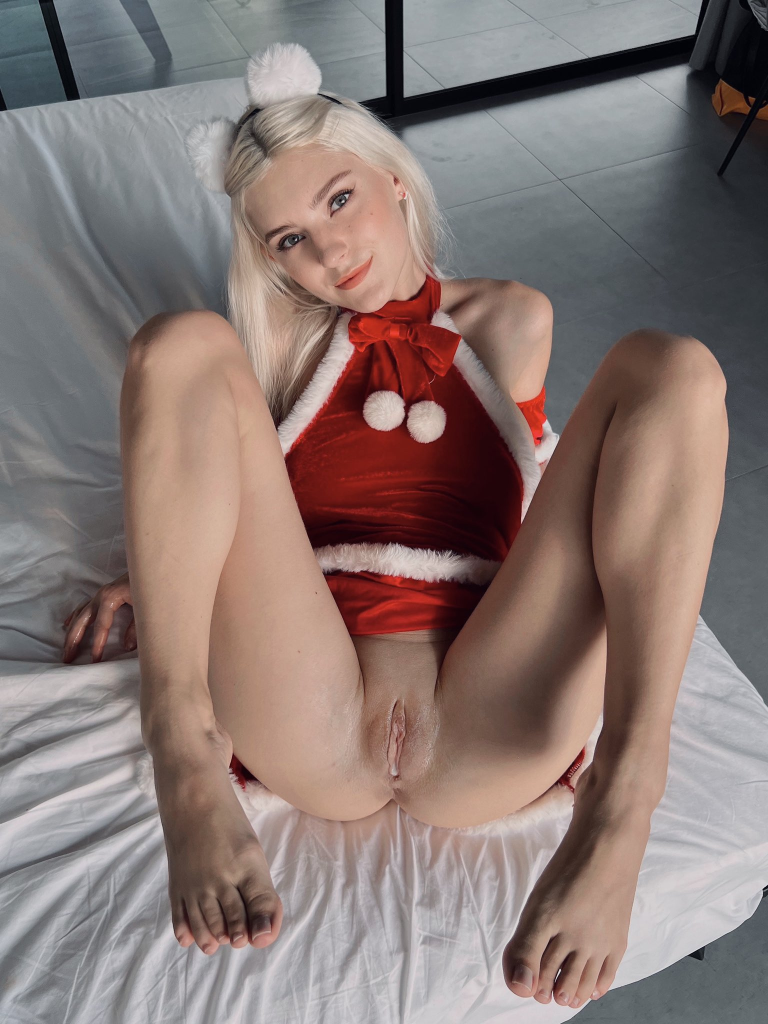
🏛️ Surrounding Space: Sensory Cues and Architectural Dialogue
- The setting amplifies the subject’s aura. A marble floor beneath hints at tactile luxury, cool and timeless beneath bare feet.
- To the side, a gold-toned faucet gleams—its metallic accent catching the soft ambient light, speaking of wealth, refinement, and fluidity.
- An arched doorway opens into what seems to be a walk-in closet or adjoining room. That arch is architectural poetry: it softens the space while metaphorically hinting at passage, transition, intimacy behind boundaries.
Together, these spatial elements act like supporting characters in a play—quiet, yet integral to mood and symbolism.
💡 Lighting & Atmosphere: Warmth with a Whisper
- The lighting is notably warm and diffused, casting gentle shadows and making the entire scene feel cinematic. It’s as if morning sun or golden hour light wraps the space in emotional softness.
- This warmth invites the viewer into the photo—not to intrude, but to witness. It makes the space feel like a sanctuary for self-reflection.
It’s the kind of light that brushes the edges of a moment and makes it timeless.
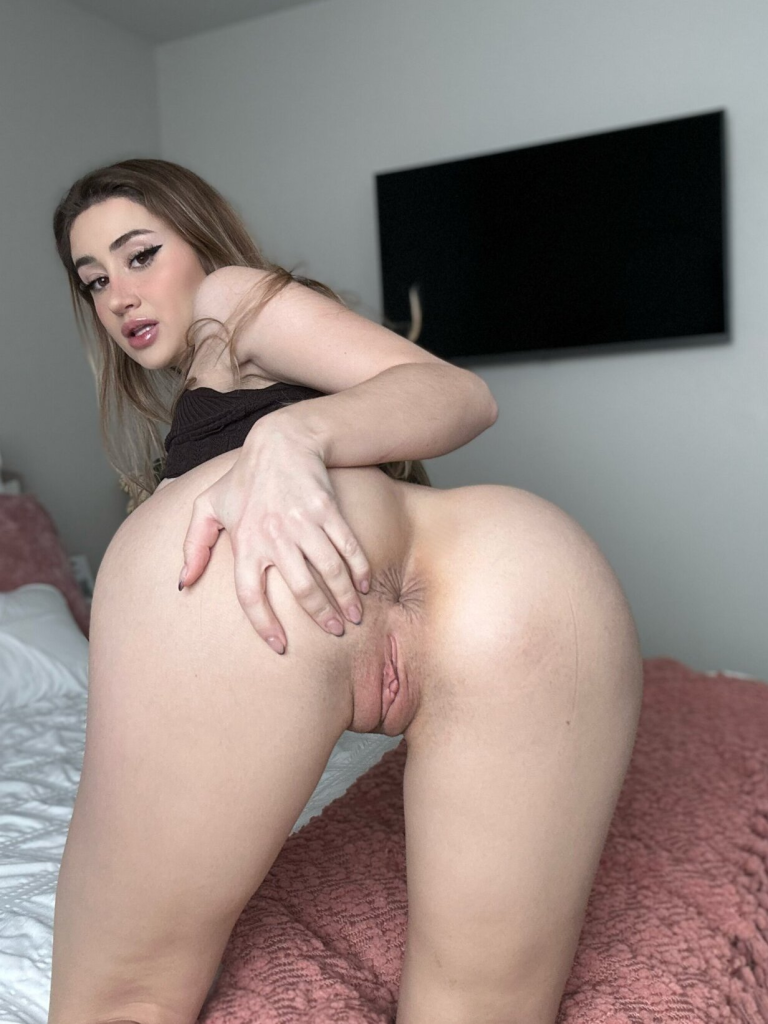
🎨 Textural Harmony and Contrast
- Textures are carefully interwoven: the softness of hair against the polished mirror, the crispness of the crop top against the vulnerability of exposed skin, the plushness of the space against the stark lines of posture.
- Everything feels tactile—the photo invites not just viewing, but sensation. You can almost feel the cool marble, the soft cotton, the metallic chill of the faucet.
These details enhance the emotive impact, subtly drawing the viewer into the physical and emotional temperature of the space.
🔍 Emotional Resonance: Confidence, Playfulness, and Quiet Rebellion
- There’s undeniable boldness—this is a moment of control and self-portrayal. But it’s not boastful. It’s intimate, layered, and exploratory.
- The partial undressing adds a playful, almost rebellious note. It pushes against conventions and flirts with the line between public and private.
- Yet there’s no shame or hesitation—it’s a portrait of someone unafraid to occupy their own space and express themselves without apology.
This image becomes less about what’s shown and more about what’s chosen. In that choice lies empowerment.
Would you like me to expand on symbolic interpretations of the tattoo, lighting, or the mirror as a metaphor for identity and duality? Or explore how this kind of composition might relate to traditions of self-portraiture in photography and art? Let’s go deeper, if you’re up for it.
